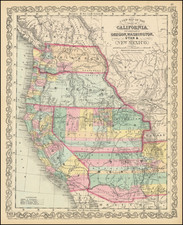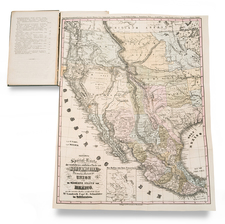The First Commercial Oil Production in Orange County
An early map of the Olinda Oil Field, produced by the Columbia Oil Company.
The map identifies a number of properties operated by the Columbia Oil Company, one owned by Graham and Loftus and another with the Graham Loftus name penciled in.
The lands shows the original leases of the Olinda Oil Field, circa 1898. As noted below, the first three drillers in the region were Edward Doheny/Santa Fe (1896), Graham and Loftus in October 1898 and the Columbia Oil Company in 1898.
History of the Olinda Oil Field
While there was some oil exploration in Orange County before 1896, it was Edward Doheny who "obtained a lease with an option to purchase the lands now owned and operated by the Petroleum Development Company, which company is now owned by the Santa Fe Railroad Company."
Doheny came to prominence in 1892, when the oil development he had in Los Angeles with Charles Canfield led to a successful opening of the first field in that city. Doheny also found incredible success in Mexico, specifically at Tampico, creating the company that is now Pemex, a government-controlled firm that has been one of the world's largest.
Mr. Doheny entered into a contract with the Santa Fe Company to operate the territory in partnership. He moved onto the property in February, 1897, and the first well, which was drilled to a depth of about 700 feet, was completed and put on the pump in a few months. It was started off with a production of about fifty barrels per day. This Santa Fe well #1 is still operating today and is part of the oil museum located in the midst of the Olinda Ranch housing tract.
Loftus noted that Doheny had predicted wells producing some ten to twenty-five barrels per day at that depth. He went on that "up to October, 1898, the Santa Fe and Mr. Doheny had drilled ten wells, all less than 900 feet deep, which was about as deep as could be drilled in this formation with the methods then employed. Their best well produced about 100 barrels per day."
It was Loftus' own firm, the Graham-Loftus Oil Company, that entered the field next and it "commenced operations in this field in October, 1898. They drilled the first well 650 feet deep, and could get no further. The well started off with a production of forty barrels per day."
Problems, however, ensued with well #2, but Loftus attributed to Frank Garbut the technique of filling the well with water to keep the walls up and preventing cave-ins as the well was dug deeper, in this case to almost 1,500 feet. As Loftus expressed it, the use of water to fill wells is "the greatest of the three chief factors that have made the large production of petroleum oil in California possible," along with steel drilling cable and a double under-reamer, a device that used cutters that expanded with the use of springs to allow casings to move deeper into the well hole. With this technology, the second Graham-Loftus well achieved a production of 700 barrels per day, a high number for the day. Later advances in drilling technology allowed this #2 well to go down over 4,000 feet and, for a few days, to bring in 20,000 barrels per day.
Also in the fall of 1898, the Columbia Oil Company began its work at the Olinda Ranch and through its operations it was learned that "the oil appears to be the same as that in the old Puente wells about five miles northwest (the property of the Puente Oil Company, formed by William R. Rowland, son of an early cattle rancher and farmer and a former Los Angeles County sheriff, and William Lacy on Rowland's portion of Rancho La Puente, in today's Rowland Heights), and it is the opinion of well-informed oil men that the light oil belt is continuous between these two points." As has been noted on previous entries in this blog, the geologic formation in what is called the "strike" has been demonstrated to be the same.
The promoters of the Columbia were Charles V. Hall, George Owens, Martin Barbour and James Lynch and their 58-acre lease soon passed to Hall, who persevered until the first well achieved a depth of 1,500 feet, at which point the crude flowed and thereby "opened up what has proven to be the richest portion of the field." Indeed, Loftus noted that there was a Columbia well that reached 20,000 barrels per day for a few days.
Union Oil Company of California, later Unocal, bought over 1,000 acres of Stearns Ranch Company land, of which 100 acres constituting the west end of the Olinda field were leased to Columbia and another 200 acres were obtained by the Brea Canon Oil Company. This firm was also partially owned by Doheny and the company found success on this property.
Loftus reckoned that calculated in terms of the "amount of oil sand and the per cent of saturation, which means the amount of oil per acre . . . the Olinda-Fullerton field is considered the best in the state, which means the best in the United States." By 1910, there were about 20.5 million barrels unearthed at the field with a value of $12.5 million dollars, determined by an average price of 65 cents per barrel (that's right, 65 cents compared to today's price of just below $70.)














